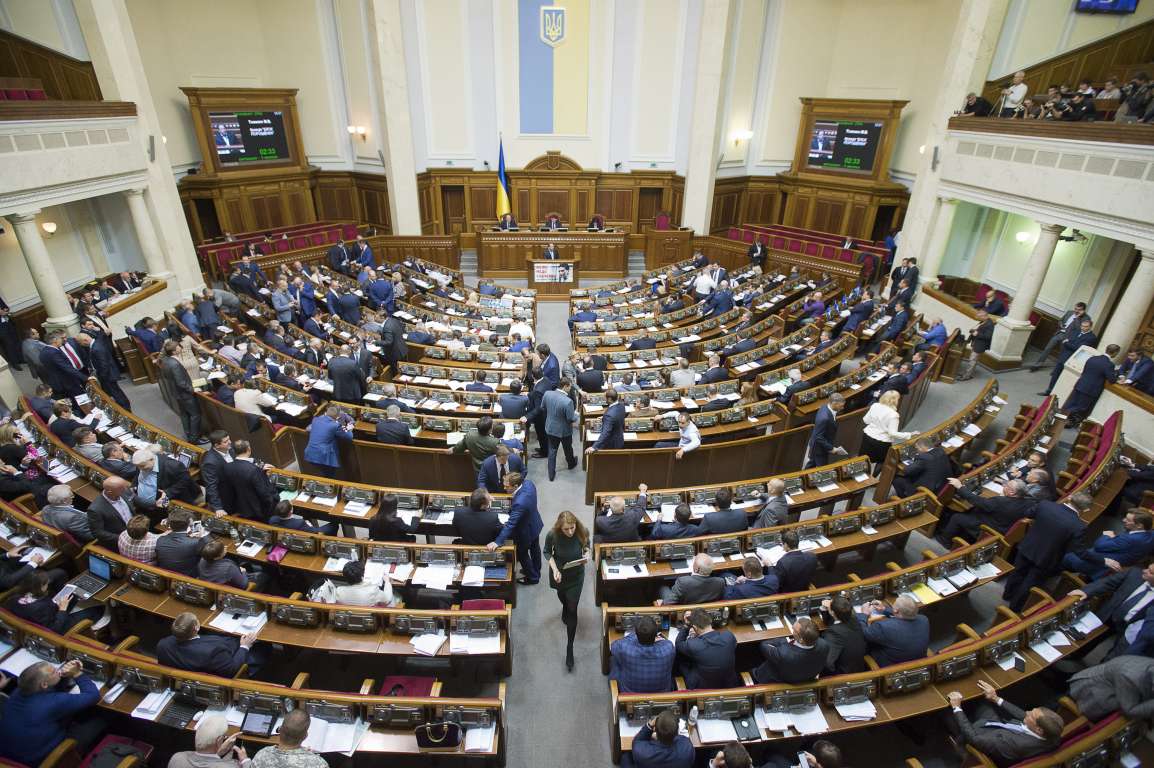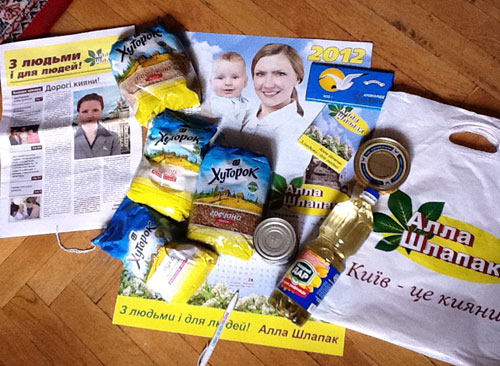Why there is a need to change the system
- The majority one opens the doors for using “administrative resources,” which means direct and indirect bribing of voters with the help of state funds. Most often, this bribing includes giving money or event the infamous practice of giving out packages of food products such as buckwheat to voters and the urgent renovation of infrastructure (building playgrounds, paving the streets, painting the walls) just before elections (which might be left unfinished if a candidate does not win).
- Another drawback of the majority component is that it allows candidates who aren’t supported by the majority of the population but gained only a slight advantage compared to other candidates, to get into Parliament.
- And the proportional system with closed party lists doesn’t promote the renewal of the political elites either.
Three and a half years of attempts to turn to the proportional system
Attempts to change the system a few months before the 2014 early elections had failed. First, because many preparations were necessary, and without the proper amount of time, to carry them out, chaos would be unavoidable. Also, there was a need to educate voters and explain to them how to vote in terms of the more complicated proportional system. Second, at that time, the ruling politicians were also not interested in changes. Knowing that the changes would not be adopted anyway, they resorted to populism and made a show of demonstrating their will and efforts to implement the changes, which were a demand of civil society. In the end, the system was not changed for the early elections of 2014. After the new Parliament was elected and the coalition was formed, the coalition agreement signed by the Petro Poroshenko Bloc, Narodnyi Front, Batkivshchyna, Radical Party of Oleg Liashko and Samopomich envisaged changing the electoral rules. The last three left the coalition, and Petro Poroshenko Bloc and Narodniy Front are the least interested in changing the system now. The parliamentary groups Vidrodzhennia and Volia Narodu (together 46 MPs) are not interested in proportional system as well, because they consist mostly of majoritarian MPs who don’t want to be involved in big party projects.An alternative version of why the Parliament supported changing the system

“Then they [Petro Poroshenko’s Bloc and Narodniy Front] would be able to say ‘See, we voted and tried to implement changes, but they [other abovementioned political forces] prevented us’,” Ukrainska Pravda quotes the explanation of an MP from Narodnyi Front.Co-chairman of the Opposition Bloc and oligarch Vadym Novynskyi, in his turn, said that his political force voted “for any proportional system which will not allow using administrative resources in constituencies.” However, the media writes that the key three votes came from majoritarian MPs who, according to the groups they belong to, voted by mistake. Therefore, it is extremely likely that the Code will not be adopted in the second reading. But there is one condition which might change the situation – the attention of society and Ukraine’s western partners.
The reaction
The voting caused a lively response in Ukraine – despite the discussions, the election issue seemed frozen for a long period. The adoption of the Code in the first reading was already welcomed by the EU. The Delegation of the EU to Ukraine reminded that the election reform is a key element of the agenda of the Association Agreement between Ukraine and the EU and expressed expectation that the work on the Election Code will be finished by the end of 2017, because it is crucial to finalize the changes long before the next elections which planned for 2019. The Council of Europe also released its statement with a call to conduct the reform as soon as possible. After the first reading, the Ukrainian election watchdog Civil Network OPORA called on the Chairman of the Verkhovna Rada of Ukraine and the Parliamentary Committee on Judicial Policy and Justice to guarantee the preparation of draft Election Code on the basis of openness and transparency standards, in line with the regulations, and with consideration of expert suggestions from non-governmental organizations.“Taking into consideration that draft Election Codes have not been discussed in 2014-2015, the MPs should abstain from making any non-systemic amendments and propositions to the draft Election Code, which have already been adopted in the first reading, without prior discussion and coordination with deputy factions and groups. Many amendments, made by MPs individually to the draft Election Code, which are not discussed or supported by their factions or groups, must not become a reason for slowing down the law-making process. On the contrary, only a thorough discussion at the level of competent committee, deputy factions and groups, can guarantee a successful adoption of the draft Election Code, and is a sign of systematic amendment of electoral legislation,” says the statement.
What are the regional lists
Let’s take a look at the way how parliamentary elections will take place if the changes are adopted.- The majoritarian component will be canceled. But the proposed new system is still not strictly proportional.
- According to the Election Code, Ukraine will be divided into 27 counties. They will correspond to the administrative division of oblasts, with exceptions made for Kyiv and Dnipropetrovsk Oblast, which would have 2 counties. Also, South County will include Kherson Oblast, Crimea, and Sevastopol.
- Perhaps the most important change being made is the introduction of open lists. At its congress, a party will have to nominate a nationwide list of candidates. A part of them should be included in the regional election lists with which a party will run in every county. A regional list should include no more than 5 candidates.
- Voters will receive a bulletin with two columns. In the first they should put the number of the party they vote for. In the second they can but don’t have to put the number of the candidate from the regional list they support. If a voter leaves the second column empty, his vote will go just for a party. Therefore, voters can influence the lineup of party candidates on the list. Previously, Ukrainians voted via closed lists, i.e. voting for a political party itself and having no influence on who actually gets into parliament.
- Currently, only parties who are supported by at least 5% of the population receive a mandate in parliament. This threshold was reduced to 4%.
The drawbacks

- Helped opposition parties, which previously were prevented from entering parliament by the numerous pseudo-independent self-nominated and pro-governmental candidates in majoritarian counties;
- Eliminated corruption at single-mandate constituencies;
- Created conditions for the emergence of ideological parties;
- Changed elections from the competition of personalities that they were into a competition of political programs.
- It benefited the party leaders, but did not solve the questions it was called to solve;
- A lot of representatives of the large businesses were included on the party lists (on a commercial basis), cementing the connection between business and politics;
- MPs were totally dependent from the party leadership – the candidates to party lists initially were selected by the criteria of loyalty to the leaders;
- Representation of different regions was hugely disproportionate.
Other aspects of Ukrainian elections

Read also: Electing bad leaders in Ukraine: how to break the vicious cycle #UAreforms






